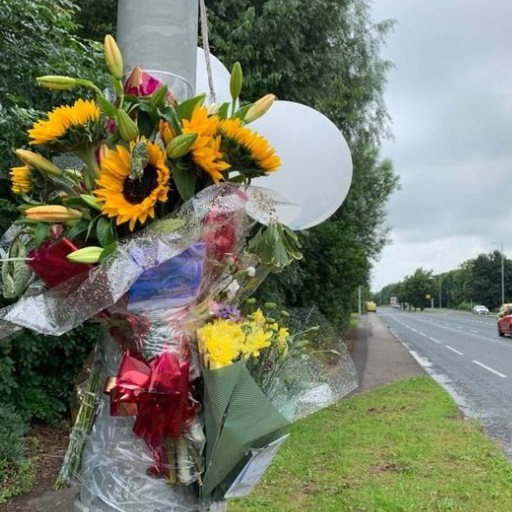Understanding Roadside Memorials
You may have driven past a small white cross, flowers, or a decorated plaque on the side of the road and wondered what it meant. These roadside memorials are placed in locations where people have lost their lives in traffic accidents. For families and loved ones, these memorials serve as a way to honor the deceased and keep their memory alive. They also act as a warning to drivers, reminding them to be cautious and aware of the dangers of the road.
Throughout history, people have marked the places where loved ones passed away. In modern times, roadside memorials have become a common and emotional sight, often reflecting personal or cultural traditions. While some view them as powerful reminders of loss and road safety, others question their legality and impact on drivers.
This article explores what roadside memorials are called, their history, cultural significance, and legal considerations. Understanding these memorials helps us appreciate their meaning and the deep emotions behind them.
What Are Roadside Memorials Called?
The names for roadside memorials vary by culture, region, and purpose. While they all serve the same function—honoring someone who has passed away in a traffic accident—the terminology can differ based on traditions and customs.
Some of the most common names include:
- Descansos – A term used in Spanish-speaking communities, meaning “resting places.” These markers often appear in areas with strong Catholic traditions.
- Ghost Bikes – These are painted white bicycles placed at crash sites where a cyclist was killed, serving as a tribute and a symbol of road safety awareness.
- White Cross Memorials – Many roadside memorials feature a simple white cross, a widely recognized symbol of remembrance.
- Roadside Shrines – In some regions, these memorials take on a religious tone, with candles, pictures, and religious symbols.
- Crash Site Memorials – This general term refers to any marker placed at the location of a fatal accident.
Regardless of the name, these memorials represent a deep sense of loss, remembrance, and a desire to prevent future tragedies.
The History and Cultural Significance of Roadside Memorials
The tradition of marking places of death dates back centuries. In many ancient societies, people placed stones, crosses, or other objects at the site of a death as a way to honor the deceased. This practice continues today in the form of roadside memorials, especially as automobile-related deaths have become more common.
In Spanish-speaking cultures, descansos have been used for centuries to mark locations where a funeral procession stopped to rest. Over time, these resting places became permanent markers of remembrance. In Greece, roadside shrines called kandilakia are placed where accidents have occurred, often as a symbol of gratitude for survival or as a tribute to the lost.
In the United States, the rise of roadside memorials began in the late 20th century, as more families sought ways to grieve publicly and raise awareness about traffic safety. Many memorials now include flowers, personal mementos, photographs, and signs reminding drivers to slow down or drive sober.
While some roadside memorials are temporary, others remain for years, cared for by family and friends. They serve both as a personal tribute and as a public reminder of the dangers of reckless driving, encouraging road safety for all.
Laws and Controversies Surrounding Roadside Memorials
Although roadside memorials hold deep meaning for grieving families, their presence has sparked debate and legal challenges in different parts of the world. The main concerns revolve around safety, legality, and fairness.
Are Roadside Memorials Legal?
Laws regarding roadside memorials vary by state and country. In some places, these memorials are allowed as long as they do not create a traffic hazard. However, in other areas, local governments have banned or limited roadside memorials, arguing that they:
- Distract drivers and create additional safety risks.
- Interfere with public property and road maintenance.
- Raise concerns about fairness, as not every family is able to maintain a memorial in a public space.
Safety Concerns
Some officials argue that roadside memorials may be dangerous if they cause drivers to slow down suddenly or take their attention off the road. Maintenance workers also face challenges when navigating around permanent memorials.
Alternatives to Roadside Memorials
To address these issues, some states and cities have introduced official highway memorial programs. Instead of personal roadside memorials, families can apply for state-approved memorial signs, which are installed and maintained by transportation departments. Another alternative is virtual memorials, where families create online tribute pages to honor their loved ones.
Despite these concerns, roadside memorials continue to be an important part of the grieving process for many families.
Why Roadside Memorials Matter
For those who have lost a loved one in a traffic accident, roadside memorials are more than just a marker—they are a place of remembrance, healing, and advocacy. These memorials provide:
- A way to honor the deceased: Many families feel comforted knowing their loved one’s memory lives on at the site of the accident.
- A reminder for road safety: Seeing a roadside memorial can encourage drivers to slow down, stay focused, and make safer choices.
- A symbol of love and loss: They serve as a visible expression of grief and remembrance, showing that the person who passed away was deeply loved.
Next time you pass a roadside memorial, take a moment to think about its meaning. These memorials represent real lives, real families, and the importance of driving safely. Have you encountered a roadside memorial that left an impact on you? Share your thoughts in the comments, and if you found this article insightful, consider sharing it with others.


